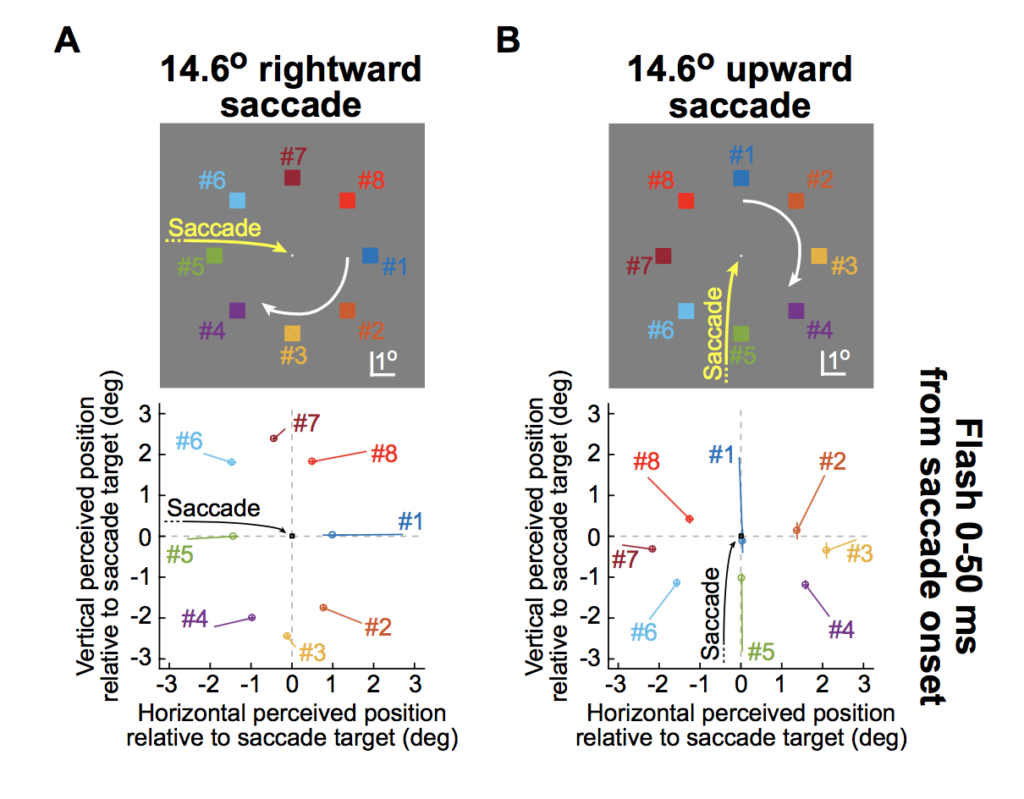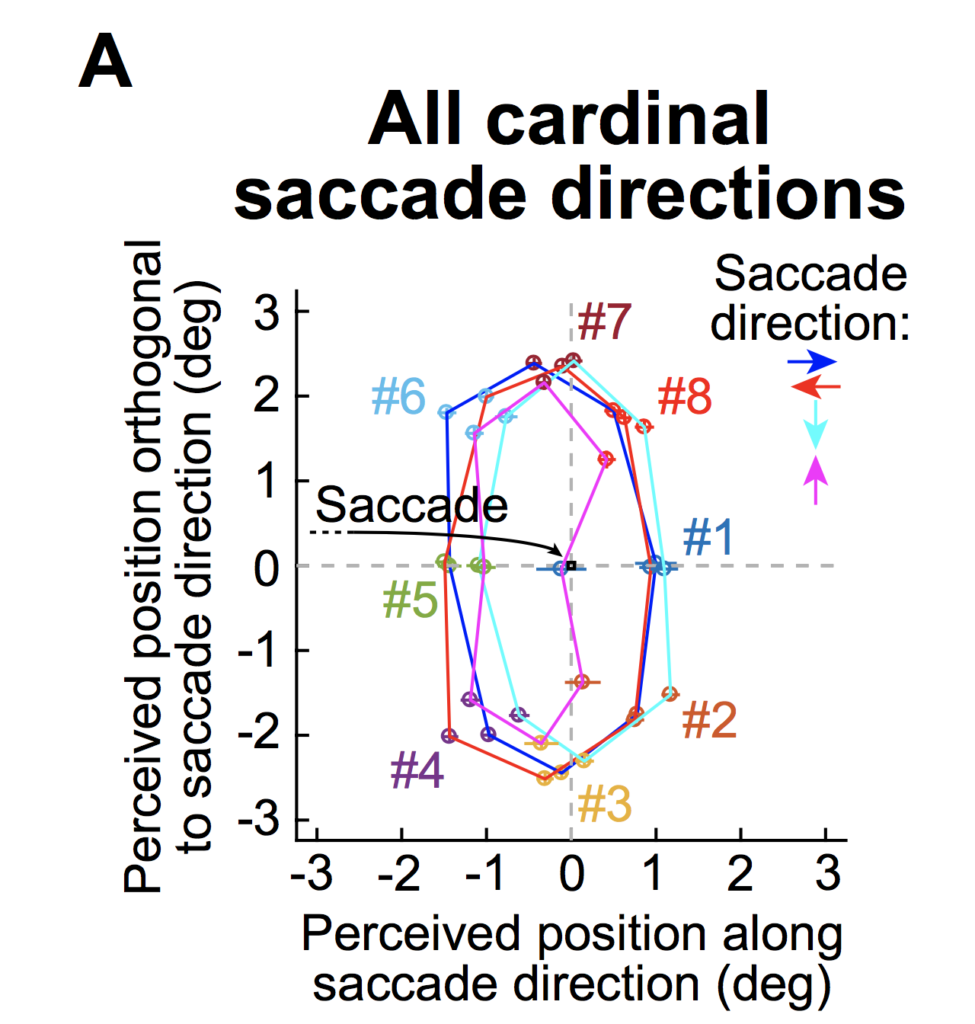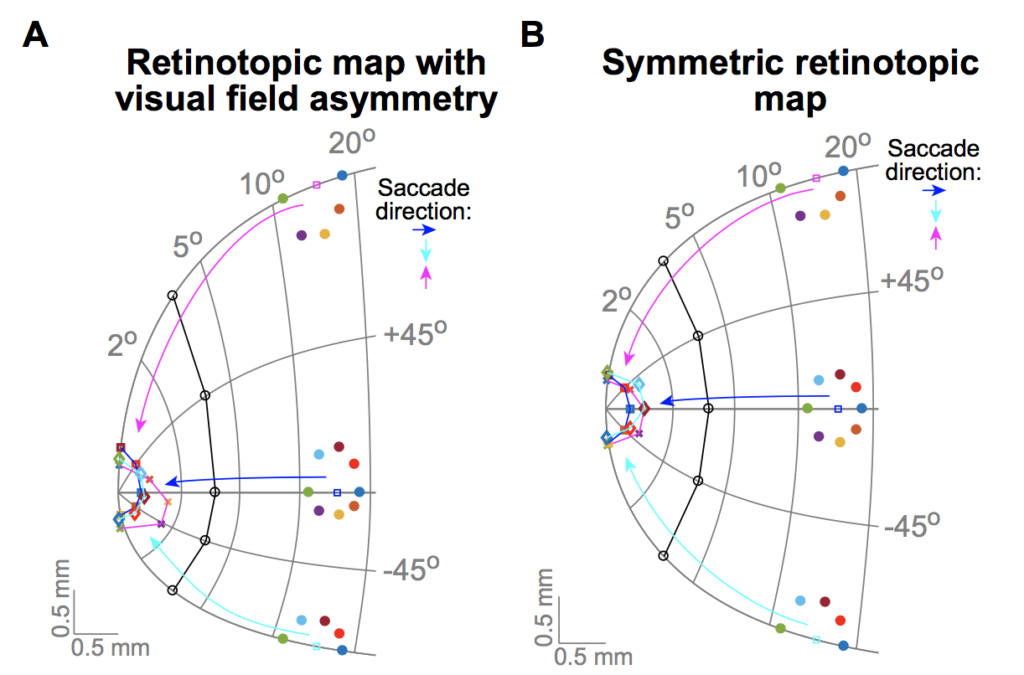We have a new paper just published in the Journal of Neurophysiology! The paper appear’s in the journals Special Issue on the Role of Eye Movements in Perception, Cognition, and Action.
The paper describes our latest exploration of the phenomenon of peri-saccadic perceptual mislocalization. In this phenomenon, a brief stimulus that appears around the time of a rapid saccadic eye movement is perceptually mislocalized quite strongly (i.e. it perceptually appears at a different location from its real physical location). Earlier studies have only investigated perceptual mislocalization with horizontal eye movements. However, we were motivated by our recent discoveries of asymmetries in the superior colliculus between the upper and lower visual fields. We therefore hypothesized that patterns of perceptual mislocalization can be different if saccades are of different directions. If so, this can motivate many interesting new experiments on the mechanisms linking eye movements to visual perception!
 We indeed found a difference in perceptual mislocalization patterns for different eye movement directions. For example, if we make an upward saccade, perceptual mislocalization is significantly stronger than with other saccade directions. Similarly, if we make a diagonal saccade (e.g. look up to the right or down to the right), then perceptions are different if the saccade have an upward or a downward component (see this movie for an example).
We indeed found a difference in perceptual mislocalization patterns for different eye movement directions. For example, if we make an upward saccade, perceptual mislocalization is significantly stronger than with other saccade directions. Similarly, if we make a diagonal saccade (e.g. look up to the right or down to the right), then perceptions are different if the saccade have an upward or a downward component (see this movie for an example).
We conceptually modeled these results as emerging from neural circuit maps (like in the superior colliculus) that are intrinsically asymmetric. In other words, when neural maps represent visual space, they do not do so veridically. Instead, they distort the representation in order to allocate more neural resources to certain important image locations. An obvious example of this is foveal magnification. Since our retina has a tiny region of the visual image with high resolution, neural maps dedicate many more neurons to this tiny region. Therefore, the representation of the visual image magnifies the input from a tiny foveal region and compresses the periphery. The result is a distortion of images in neural maps. We hypothesized that there are additional distortions beyond foveal magnification, and more specifically related to upward and downward locations. Our results in the current paper are consistent with these kinds of additional neural distortions, and they are in line with our other work (e.g. this review article).
We are excited by these results, especially because our paper provides a very rich data set motivating future neurophysiological experiments on the neural mechanisms that link eye movements to perception and cognition, exactly like in the topic of the special issue of the journal!

